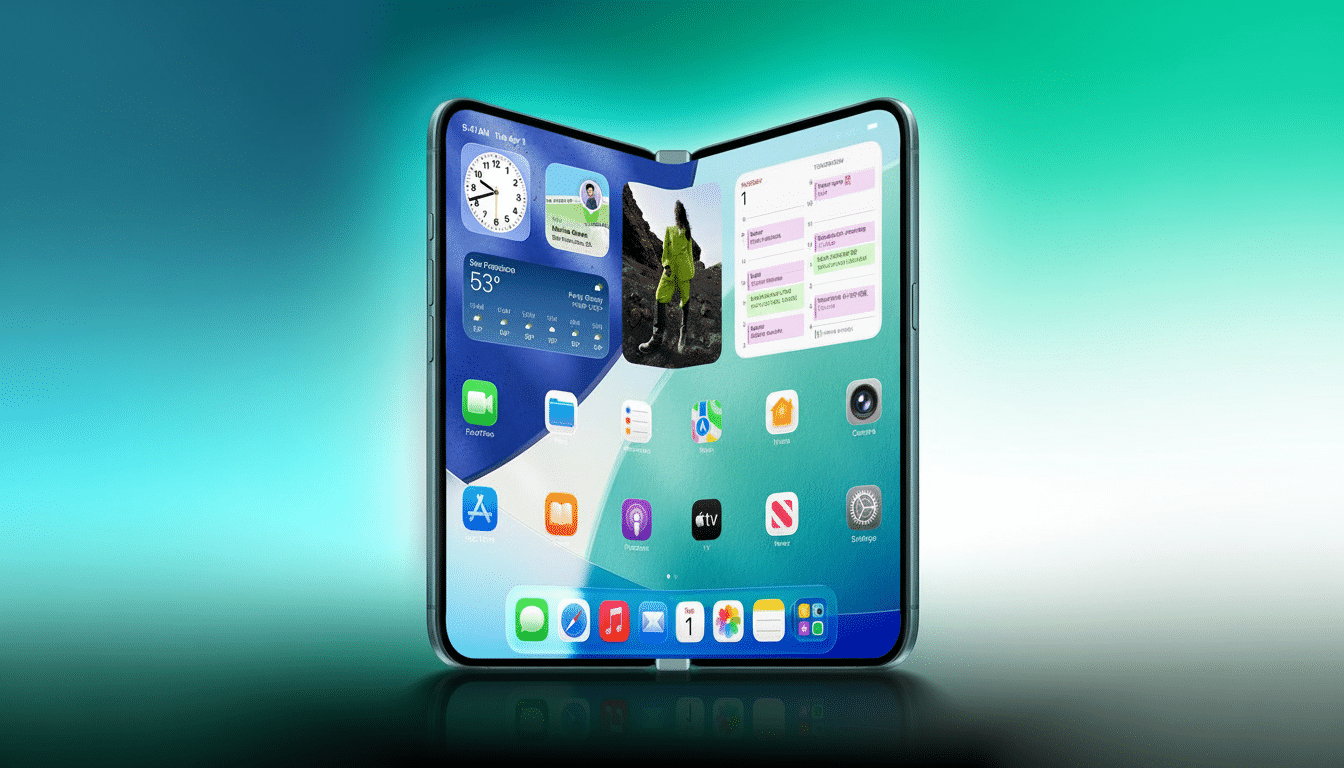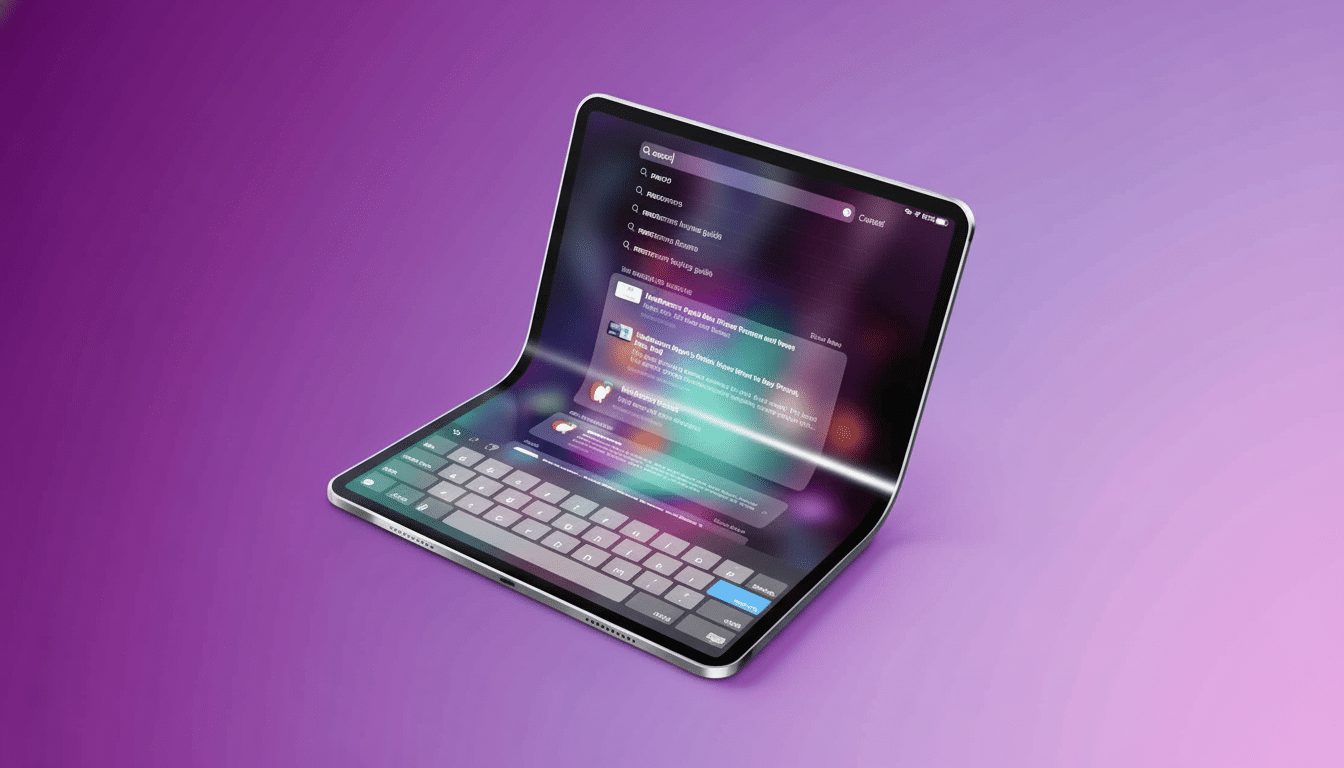Apple’s long-rumored foldable iPad is facing more difficult engineering problems than anticipated, according to new reports — the unfortunate news being that the device has been pushed out to a later launch window and now comes with an eye-watering price target of around $3,900. According to Bloomberg’s Mark Gurman, the project’s heft and mechanical intricacy are responsible for the delay but also the premium price — and perhaps that means Apple is not willing to skimp on toughness or visual quality when it comes to its inaugural big-screen folder.
Why the delay? Engineering snags with hinge and display
At the center of the problem is the foldable display and its mechanical hinge. Apple is said to be seeking a panel with a crease that is barely visible, with hinge tolerances that stay tight over many years. It means a hinge that can survive tens of thousands of open-and-close cycles without incurring wobble, uneven resistance, or visible artifacts at the fold line — requirements that often lengthen development timelines and hike material costs.
- Why the delay? Engineering snags with hinge and display
- Why the price keeps rising on Apple’s foldable iPad plans
- How it compares to today’s foldables in price and design
- What it means for the iPad line and accessory ecosystem
- Supply chain outlook and timeline shifts for the foldable iPad
- The big question: Who would pay $3,900 for this device?

Weight is another sticking point. The foldable iPad is rumored to touch down at around 3.5 pounds, which will sit closer in weight to a thin-and-light laptop than a typical tablet. For some context, the existing 13-inch-class iPad Pro is comfortably south of a pound and a half. The foldable apparently ditches an external “quick glance” display, and, when closed, it has the footprint of a 13-inch laptop with aluminum casing — an indication that Apple is favoring rigidity and thermal headroom over ultra-portability.
Why the price keeps rising on Apple’s foldable iPad plans
At the top of the list sits one very expensive component: a large OLED panel said to be supplied by Samsung Display.
- Low yields at larger substrates
- Ultra-thin glass requirements
- Special cover layers or coatings
- High-pressure lamination steps that reduce crease artifacts
Industry analysts at Display Supply Chain Consultants have said that foldable panels are still coming in at multiple times the price of regular tablet displays, especially at 17–18 inches.
The hinge assembly has cost gravity of its own. Precise, cam-profiled multi-link hinges, reinforced bearings, and complex spine covers are not only expensive to produce but challenging to scale at Apple’s quality bar. Early runs are usually low volume, so the BOM remains high until yields increase. Add the reinforced frame elements, custom flex cables, and higher-capacity batteries needed to accommodate a larger canvas, and that near-$4,000 figure begins to appear more like a sum of unavoidable trade-offs than anything as mundane as markup.
How it compares to today’s foldables in price and design
Apple at $3,900 would put it higher in the market than almost every other mass-selling foldable that you can buy. Huawei’s MateBook Fold 18, which was released in China, starts around $3,400. Lenovo’s ThinkPad X1 Fold 16 has cost between approximately $2,499 and $3,499 depending on the configuration. On the phone side, foldables such as Samsung’s Galaxy Z Fold line tend to be in the range of $1,800 to $2,000. Apple’s rumored device — bigger, heavier, and more like a laptop when it’s closed — seems like a premium canvas for creative professionals or productive desk warriors, not a mass-market tablet replacement.

What it means for the iPad line and accessory ecosystem
A foldable iPad would blur the line even more between a MacBook and an iPad. A big, foldable OLED panel would be great for design, illustration, and video review — but it poses software questions: How far can iPadOS go in windowing, external display support, and pro workflows to justify a device that expensive? Apple’s investments in Stage Manager, Pencil features, and hardware-accelerated media engines have pointed to the company laying this groundwork, but its bulk and price smack of a niche proposition for studios or field teams rather than average users.
There’s also the accessory ecosystem. Something folding into a laptop-like form factor pretty much cries out for a well-engineered keyboard and trackpad setup, some sturdy stands with lots of adjustable angles for various positions, and rugged cases that won’t add too much bulk. Apple has in the past used its first-party accessories to set a baseline, and then it invites third parties to fill out the gaps — another place where design complexity can impact timelines and pricing.
Supply chain outlook and timeline shifts for the foldable iPad
The Bloomberg post suggests a shift from previously targeted internal dates to later windows, and from initial cost expectations of around $3,000 to as high as nearly $3,900 currently. Any slip is probably related to display readiness and hinge reliability. Samsung Display is increasing capacity for large OLEDs, and LG Display has invested in next-gen panels for tablets and notebooks too; but ramping a low-crease, 18-inch foldable panel at Apple’s scale would challenge even top-shelf suppliers.
Apple’s hardware cadence — engineering validation, design validation, and production validation — typically requires multiple rounds of tooling and reliability testing. Hinge fatigue tests, temperature cycling, and drop performance with an internal flexible panel are particularly brutal. Price and timing will remain moving targets until those metrics clear.
The big question: Who would pay $3,900 for this device?
That’s most likely going to be early adopters, creative pros, and businesses making a purchase. For a cinematographer reviewing HDR footage on set, or a designer storyboarding with Pencil on something just shy of an 18-inch OLED display, the utility could merit the premium — especially if it replaces both a tablet and a laptop. For most people, though, a lighter iPad Pro or MacBook Air offers a more suitable blend of price, weight, and capability.
If history is any guide, Apple will wait until the experience feels unequivocally “finished.” That patience comes at a cost, and it is reflected in the price guidance coming out now. If the foldable iPad were to ship next year as rumored, we would see a showcase device that stretches the definition of what a tablet can be — and how much people will pay to get there.

